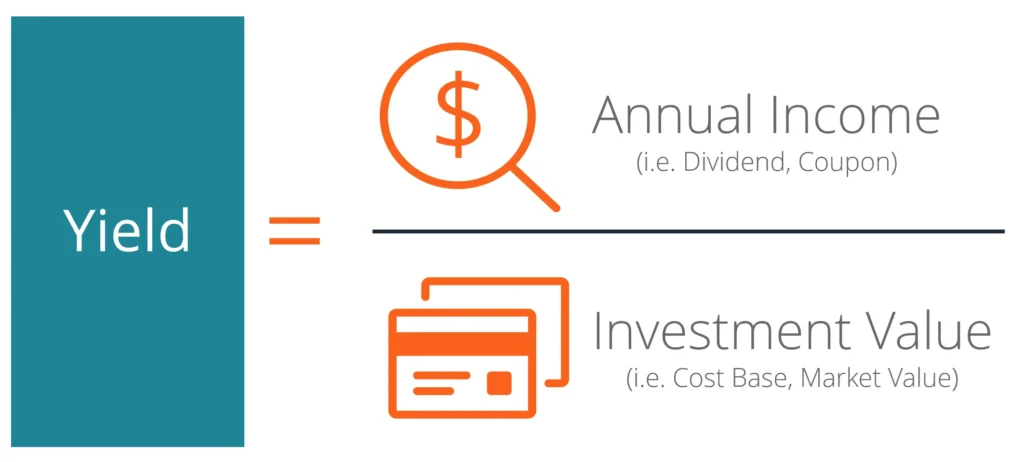Yield
Yield refers to how much income an investment generates, separate from the principal. It’s commonly used to refer to interest payments an investor receives on a bond or dividend payments on a stock.
Yield is often expressed as a percentage, based on either the investment’s market value or purchase price. For example, let’s say bond A has a $1,000 face value and pays a semiannual coupon of $10. Over one year, bond A yields $20, or 2%. This is known as the cost yield because it’s based on the cost or value of the bond.
However, most people buy bonds on the secondary market and not directly from the issuer, meaning they pay more or less than face value. If you’re considering purchasing the same bond A for $900, the $20 coupon payments based on the current $900 price would be a yield of 2.2%. This is known as the current yield because it’s based on the current price of the bond.
Yield is also a commonly used term when discussing dividend stocks. For example, let’s say you purchase 100 shares of XYZ for $50 ($5,000 total). Each quarter, XYZ pays a dividend of 50 cents per share. Over a year, you would receive $200 in dividend income (50 cents x 4 quarters = $2 x 100 shares). Your initial investment of $5,000 yielded 4% ($200 / $5,000 x 100). –US Bank Wealth Management


